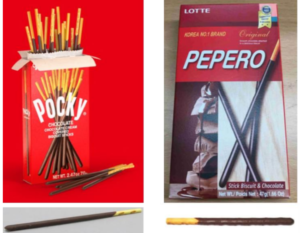Addressing whether Lanham Act claims for false advertising or false association under § 43(a) (15 USC § 1125(a)) are subject to a statute of limitations, the US Court of Appeals for the Fourth Circuit concluded that the sole time limit on bringing such claims is the equitable doctrine of laches. Belmora LLC v. Bayer Consumer Care AG, Case No. 18-2183 (4th Cir. Feb. 2, 2021) (Floyd, J.)
The facts of the underlying dispute are straightforward. Bayer has sold the pain reliever naproxen as FLANAX in Mexico since 1972 and in the United States as ALEVE. Belmora began selling naproxen under the name FLANAX in the United States in 2004, where it used similar packaging and described the drug as one sold successfully in Mexico. Both companies tried to register the mark with the US Patent & Trademark Office, where proceedings unfolded. Ultimately, in April 2014, the Trademark Trial and Appeal Board cancelled Belmora’s trademark registration, finding that Belmora had blatantly misused FLANAX by drawing on the popularity of Bayer’s Mexican product. Two months later, Bayer brought claims against Belmora under § 43(a) of the Lanham Act and California unfair competition law in the US District Court for the Central District of California. The suit was transferred to the Eastern District of Virginia, where Belmora moved to dismiss, arguing that § 43(a) and state law claims were barred by the statute of limitations. Bayer replied that § 43(a) had no statute of limitations, and that the time to bring the state law claims had been tolled during the Board’s proceedings. The district court granted both of Belmora’s motions, and the appeal followed.
Because there is no express statute of limitations for a § 43(a) claim, the question before the Court was whether to assume that Congress intended that the most analogous state law statute of limitations apply, or to apply either the most analogous federal statute or common law laches doctrine. “Conclud[ing] that § 43(a) is one such federal law for which a state statute of limitations would be an unsatisfactory vehicle for enforcement,” the Court held that laches was more appropriate, for primarily two reasons. First, the statutory text provides that § 43(a) damages are subject to the principles of equity, which would include the doctrine of laches. Second, the Court found persuasive the law of the Third, Seventh and Ninth Circuits, which each apply laches as to restrict the timeliness of as § 43(a) action. That said, the Court emphasized that on remand, the district court should consider the period for bringing a similar state action as part of the laches analysis, especially because the Fourth Circuit employs a presumption that claims brought after the expiration of the most-analogous statute-of-limitations are barred by laches.
The Court noted that Bayer could overcome a presumption of laches, and cited three factors for the district court to consider:
- Bayer’s knowledge (or lack thereof) of Belmora’s adverse use
- Whether Bayer’s delay was inexcusable or unreasonable
- Whether Belmora had been unduly prejudiced by [...]
Continue Reading
read more


 Subscribe
Subscribe



